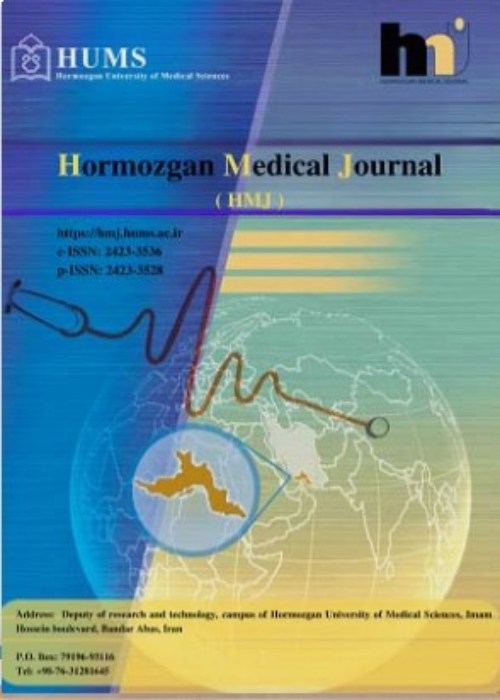Correlation Between Cephalometric and Photographic Results of Determining the Lower Anterior Facial Height
Author(s):
Article Type:
Research/Original Article (دارای رتبه معتبر)
Abstract:
Background
Today, the most commonly used instrument for determining the inferior face height is lateral cephalometry; however, due to the fact that some lateral cephalometric radiographs are given to the patient while taking radiation, and with regard to the overlaps and distortions of structures in this radiograph.
Objectives
The purpose of this study was to study the inferior height of the face based on the one-third of the face in photography and then compare its correlation with the results of cephalometry.
Methods
This descriptive-analytical study was carried out with photographic and lateral cephalometric radiographs of 75 randomly selected participants (38 women and 37 men) from among patients consulting the orthodontic clinics in Bandar Abbas in 2012 - 2013. All participants had all their permanent teeth (without third molar involvement). Patients signed an informed consent form for participation. There was no history of head and face trauma, orthognathic surgery, previous orthodontic treatment, and congenital anomalies. The anterior height of the face was evaluated based on the one-third of the face on photography according to the results of FMA (Frankfort-mandibular plane angle), Sn-GoGN, Bjork, and Jarabak, and the correlations of these values with each other were determined. Data were analyzed by SPSS software using chi-square test, kappa coefficient, and Pearson coefficient.
Results
No significant correlation was found between the photographic and cephalometric data of face height (r = -0.03, P > 0.05). There was a significant inverse correlation between the results of FMA and Jarabak index (r = -0.6, P < 0.05). There were significant direct relationships between the results of FMA and those of Bjork (r = 0.8, P < 0.05) and Sn-GoGn (r = 0.7, P < 0.05). There was no statistically significant relationship between the facial form and class I and II skeletal occlusions (P > 0.05). There was no meaningful relationship between the results of FMA angle and facial form in class 1 and 2 occlusion subjects (P > 0.05). However, this association was found stronger in class I than in class II occlusion.
Conclusions
There is no meaningful correlation between photographic and cephalometric measurements of facial height, and we always need lateral cephalometrics for the correct orthodontic treatment plan and as a golden standard. Cephalometric variables are correlated with each other for determining the vertical growth pattern, and each can be used for diagnosis alternatively.Keywords:
Language:
English
Published:
Hormozgan Medical Journal, Volume:23 Issue: 1, Jan-Mar 2019
Page:
5
magiran.com/p1953860
دانلود و مطالعه متن این مقاله با یکی از روشهای زیر امکان پذیر است:
اشتراک شخصی
با عضویت و پرداخت آنلاین حق اشتراک یکساله به مبلغ 1,390,000ريال میتوانید 70 عنوان مطلب دانلود کنید!
اشتراک سازمانی
به کتابخانه دانشگاه یا محل کار خود پیشنهاد کنید تا اشتراک سازمانی این پایگاه را برای دسترسی نامحدود همه کاربران به متن مطالب تهیه نمایند!
توجه!
- حق عضویت دریافتی صرف حمایت از نشریات عضو و نگهداری، تکمیل و توسعه مگیران میشود.
- پرداخت حق اشتراک و دانلود مقالات اجازه بازنشر آن در سایر رسانههای چاپی و دیجیتال را به کاربر نمیدهد.
دسترسی سراسری کاربران دانشگاه پیام نور!
اعضای هیئت علمی و دانشجویان دانشگاه پیام نور در سراسر کشور، در صورت ثبت نام با ایمیل دانشگاهی، تا پایان فروردین ماه 1403 به مقالات سایت دسترسی خواهند داشت!
In order to view content subscription is required
Personal subscription
Subscribe magiran.com for 70 € euros via PayPal and download 70 articles during a year.
Organization subscription
Please contact us to subscribe your university or library for unlimited access!


